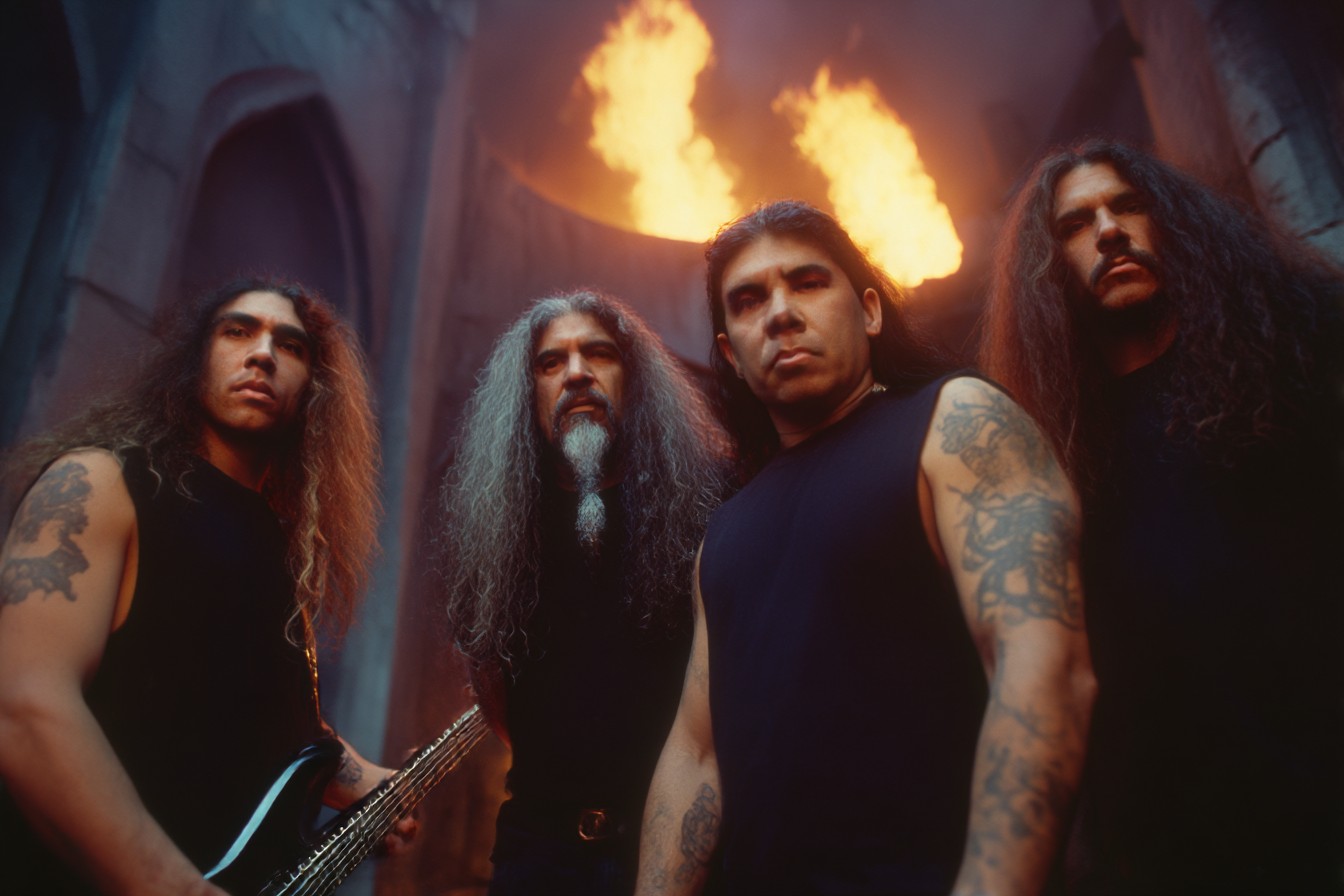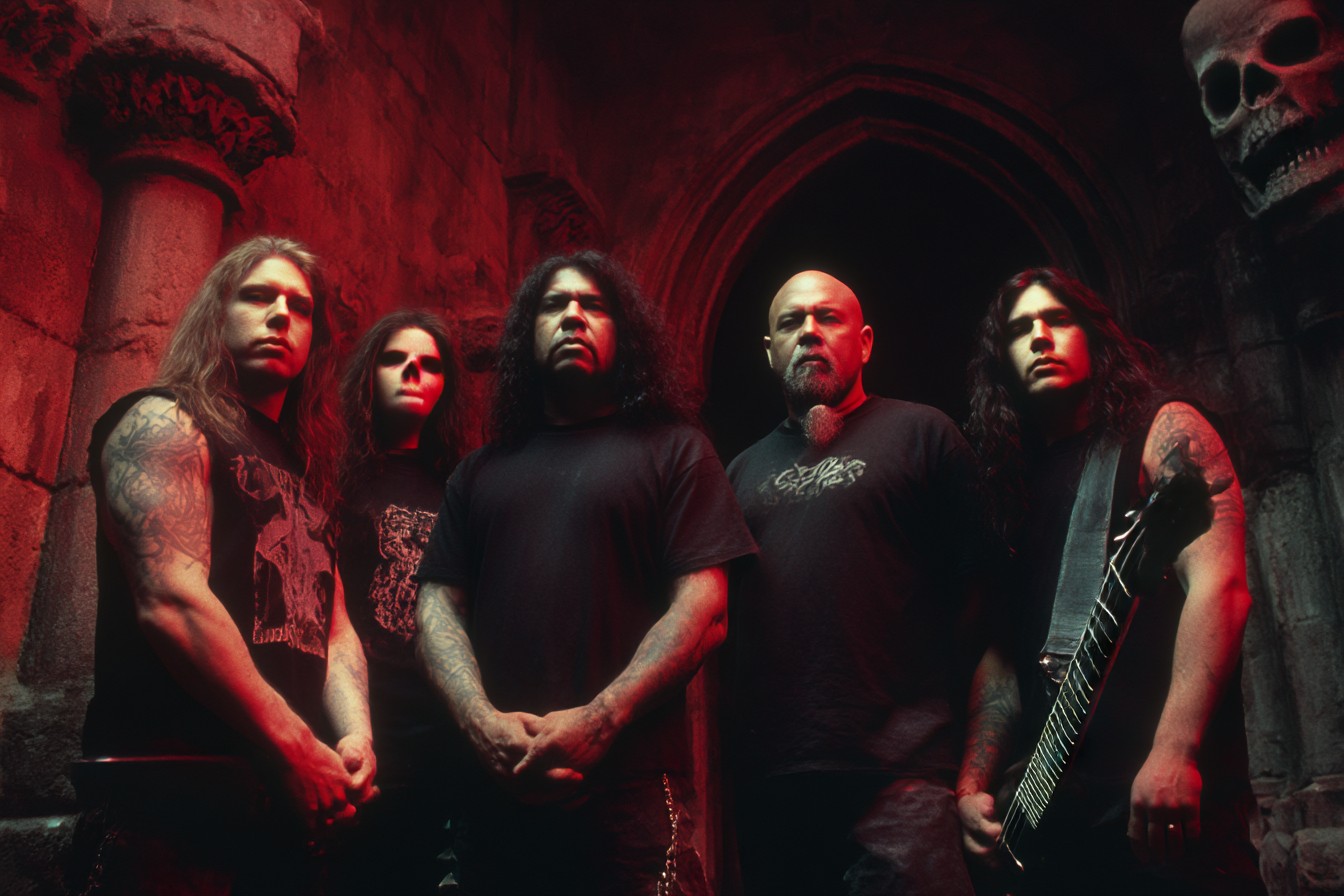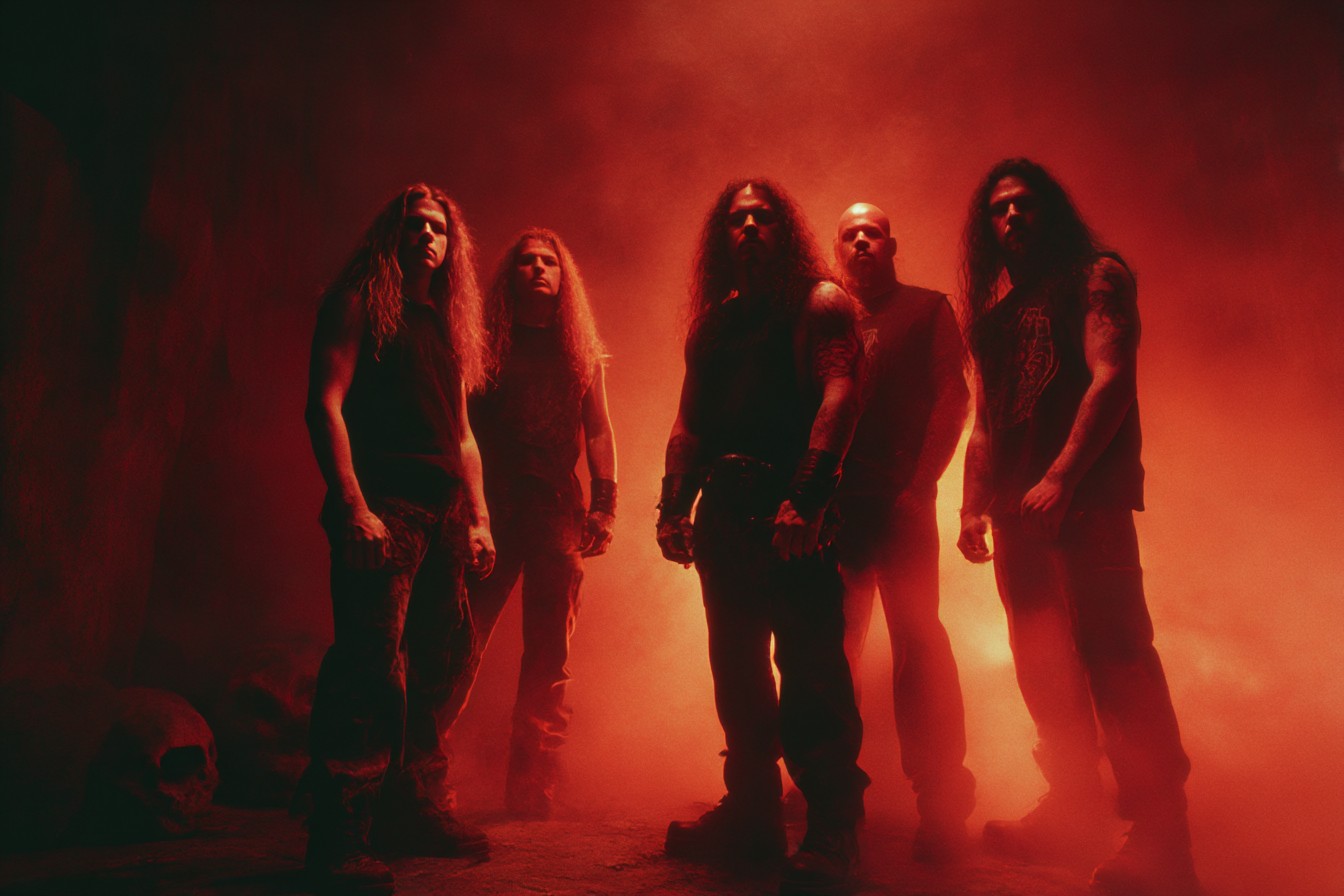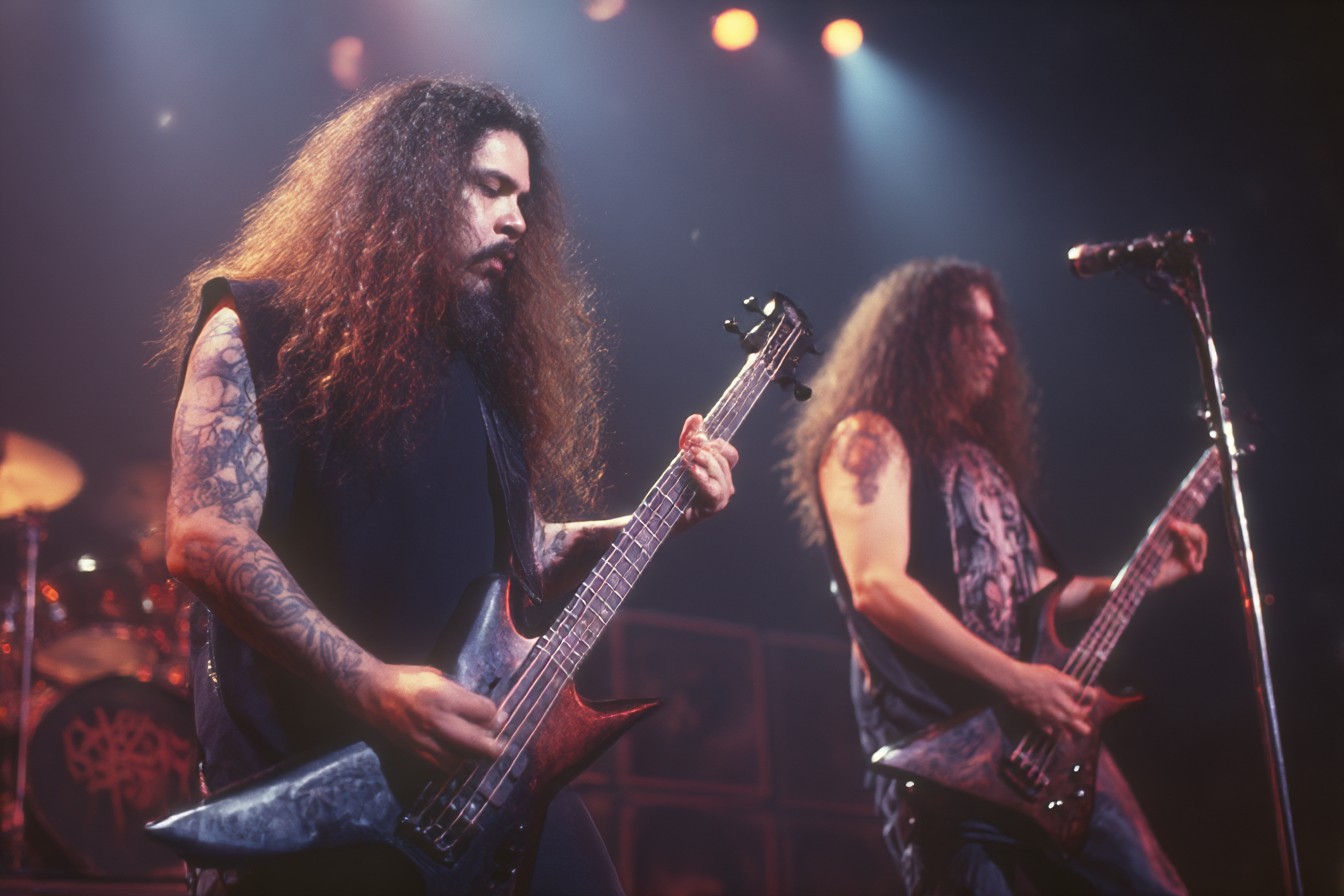I’ve got this theory I test at metal bars. Walk in, find the oldest guy wearing a battle vest, buy him a beer, and ask: “Last truly great Slayer album?” Nine times outta ten, after some grumbling about how nothing touches “Reign in Blood,” they’ll say “Seasons in the Abyss.” That tenth guy usually picks “South of Heaven,” but he’s probably just being contrarian. I respect that.
Released in October 1990—right as I was starting my sophomore year of college and my first serious attempt at music journalism for the campus paper—”Seasons in the Abyss” landed at a pivotal moment for both Slayer and metal as a whole. Grunge was lurking just around the corner, ready to kneecap the entire scene. Hair metal was already on life support. And thrash was reaching a crossroads: evolve or die.
I bought “Seasons” the day it dropped at Tower Records on Sunset. I remember standing in line behind this guy with a perfectly teased hairdo buying the new Warrant album, and feeling an almost smug satisfaction knowing what was about to hit the metal world. Not that I was psychic about the grunge tsunami coming—I just knew Slayer was about to drop another bomb. I had that same stomach-knotting anticipation I’d had before “Reign in Blood” and “South of Heaven.”
The listening ritual was sacred. Back at my crappy off-campus apartment, I kicked out my roommate (sorry, Derek), turned off the phone, cracked a Coors (look, it was college, don’t judge my beer choices), and ceremonially placed the needle on the record. That opening track “War Ensemble” hit, and I just started laughing—that slightly unhinged laugh you do when something is so perfectly executed it borders on ridiculous. Tom Araya machine-gunning those war lyrics over Dave Lombardo’s inhuman blast beats was exactly what I needed after sitting through a three-hour Victorian literature seminar.
Here’s what made “Seasons” special, and why I still think it’s their last truly classic record: it’s the perfect synthesis of everything Slayer had done before. The relentless speed of “Reign in Blood,” the creeping doom atmosphere of “South of Heaven,” all wrapped up with their most focused songwriting and—I’ll say it—their best production.
The three-album arc of “Reign in Blood” to “Seasons in the Abyss” is one of metal’s perfect trilogies. “Reign” was the speed monster that changed the game. “South of Heaven” was the deliberate attempt to throw a curveball by slowing things down (which initially pissed me off—I distinctly remember throwing a shoe at my stereo first listen—but grew to appreciate as their darkest work). Then “Seasons” came along and said, “Actually, we can do both, sometimes in the same song, and make it work seamlessly.”
Take the title track—probably my favorite Slayer song ever, and that’s not a statement I make lightly. It starts with that eerie, clean guitar intro that builds tension like a horror movie, then morphs into this mid-tempo crusher that’s somehow more menacing than their fastest material. The atmospheric middle section wouldn’t have been out of place on “South of Heaven,” but then they bring it back around to that devastating main riff. It’s a masterclass in dynamics that proved Slayer weren’t just speed merchants—they were legitimate composers who happened to work in the medium of extreme metal.
I actually got to see them on the Clash of the Titans tour in 1991 with Megadeth, Anthrax and opener Alice in Chains (yeah, that lineup was as insane as it sounds). When they played “Dead Skin Mask,” the crowd did this weird thing where instead of moshing, everyone just sort of… swayed menacingly? It was unsettling and perfect, and showed how Slayer had evolved from just causing chaos to controlling the emotional temperature of an entire venue.
The production on “Seasons” strikes this perfect balance that their later work never quite recaptured. Andy Wallace’s mix gives every instrument room to breathe while still maintaining that essential Slayer claustrophobia. Kerry King and Jeff Hanneman’s guitars have this razor precision that lets you hear every diabolical note of their interplay. Lombardo’s drums sound like actual drums instead of the triggered nonsense that would plague metal production later in the ’90s. And Araya’s bass actually cuts through the mix—a minor miracle in thrash.
I’ve had this argument with my old Riff Raider colleague Steve at least a dozen times, but I maintain that Jeff Hanneman did his best songwriting on this album. “War Ensemble,” “Dead Skin Mask,” “Seasons in the Abyss”—all Hanneman compositions, all absolute classics. The way he could shift from blistering speed to ominous mid-tempo passages revealed a sophistication that transcended typical thrash formulas. When he passed in 2013, I put on “Seasons” front to back and may have shed a very non-metal tear into my whiskey.
I had the slightly surreal experience of interviewing Tom Araya for a freelance piece right after this album dropped. I was trying to be Professional Music Journalist Guy, asking serious questions about the lyrical themes of war and serial killers, and he just kept cracking jokes between replies. Totally shattered my image of him as this intense, screaming demon. At one point he did this spot-on impression of James Hetfield that had me laughing so hard I nearly screwed up my recording. Never met a nicer guy who made his living screaming about the apocalypse.
So why was “Seasons” their last truly great album? I’ve thought about this a lot—probably more than is healthy for a middle-aged man with actual responsibilities. I think it comes down to three things: timing, personnel, and the changing landscape of metal itself.
Timing-wise, they couldn’t have known it, but they were releasing their masterpiece right before alternative rock would reshape the entire music industry. Within a year, Nirvana’s “Nevermind” would drop, and suddenly every major label was scrambling to sign flannel-wearing dudes from Seattle instead of thrash bands. The commercial window for mainstream metal was closing fast.
Personnel-wise, the departure of Dave Lombardo after this album cannot be overstated. Look, Paul Bostaph is a totally capable drummer. I’ve defended him in more bar arguments than I care to count. But Lombardo wasn’t just a drummer—he was the battery that powered Slayer’s most ferocious material. His feel, his fills, that double-bass technique that sounded like the hooves of approaching apocalyptic horsemen—it was irreplaceable. You can hear it all over “Seasons,” especially on tracks like “War Ensemble” and “Hallowed Point.”
And then there’s the changing landscape. Post-“Seasons,” extreme metal splintered into a thousand subgenres. Death metal was getting more technical, black metal was getting more atmospheric, and industrial elements were creeping in everywhere. Slayer’s next album, “Divine Intervention” (1994), wasn’t bad—it had moments of real brutality—but it felt like they were following trends rather than setting them.
My friend Marcus, who runs that record store in Portland with the absolutely insane thrash section in the back, has this theory that “Seasons” was the last album where Slayer weren’t self-conscious about being Slayer. Every album after became increasingly concerned with sounding “Slayer enough,” which paradoxically made them sound less essential. There’s something to that. “Seasons” has this confidence, this effortlessness to its brutality that later albums worked too hard to recapture.
I remember playing the cassette of “Seasons” so much in my ’86 Honda Civic that it actually warped from the heat of being left on the dashboard during a particularly brutal California summer day. The tape stretched just enough that “Born of Fire” played slightly slower than it should, which somehow made it even more menacing. That car eventually died a spectacular death outside a Sepultura show in San Bernardino (timing belt snapped, smoke everywhere, very metal), but I saved that warped cassette because it had gotten me through countless late-night drives and post-breakup rage sessions.
For me, the standout tracks on “Seasons” have always been “War Ensemble,” “Dead Skin Mask,” “Hallowed Point,” and the title track. But the album’s real strength is its consistency—there’s not a weak song in the bunch. Even “Temptation,” which some fans overlook, has that wicked bass intro and chorus that lodges in your brain like shrapnel.
The fact that it still holds up more than three decades later is testament to its staying power. I played “Spirit in Black” for my nephew last year—kid’s 19 and into some kind of electronic metal hybrid stuff that makes me feel approximately 407 years old—and watched his expression shift from polite tolerance to genuine interest when that midsection kicked in. “This is from 1990?” he asked, slightly amazed. When I nodded, he just said, “Damn, Uncle Mike.” Highest praise possible from a teenager.
I think what ultimately makes “Seasons” their last true classic is that it represented the perfect balance point between old Slayer and what would become new Slayer. They were still unmistakably the same band that created “Reign in Blood,” but they’d evolved their songwriting and weren’t afraid to experiment with atmosphere and dynamics. After this, the experimentation would sometimes veer into unfortunate territory (we don’t need to talk about “Diabolus in Musica” and its nu-metal flirtations, do we?).
There’s a bittersweetness to listening to “Seasons” now, knowing it was the last album with the classic lineup before Lombardo’s first departure, and one of the last before the wilderness years began. It’s like watching the final great performance of an athlete before injuries start to take their toll—still at the peak of their powers, but standing at the precipice.
When I do my periodic chronological Slayer listening sessions (usually after a particularly brutal workweek when I need catharsis more than melody), I always find myself lingering on “Seasons” longer than the others. It’s not just nostalgia—though, sure, there’s some of that. It’s recognition of a band at their creative peak, making exactly the album they wanted to make with zero compromise.
Live, these songs took on an even more monstrous quality. I saw them play much of this material at the Palladium in Hollywood in early ’91, and the precision with which they executed these complex arrangements while maintaining that essential Slayer chaos was mind-blowing. During “Seasons in the Abyss,” the crowd went from violent moshing to this weird collective trance, thousands of metalheads swaying in unison like some kind of demented religious congregation. Which, I suppose, is exactly what we were.
I had to explain to my second wife (the one who actually tolerated my record collection taking over an entire room) why I needed to take a day off work when Jeff Hanneman died. I played her “Dead Skin Mask” and “Seasons in the Abyss” back to back, pointing out the architectural brilliance of his riff construction, the way he used dissonance like a painter uses shadow. She listened patiently, nodded, and said, “I don’t get it, but I get why you get it.” That’s about as good as it gets in a metal/non-metal relationship.
A friend recently asked me if I thought Slayer would ever be “cool” again the way they were in the late ’80s and early ’90s. I had to laugh. Slayer was never “cool” in any conventional sense—they were necessary. They said musical things that needed to be said, created extremity that needed to exist. “Seasons in the Abyss” was the final, perfect statement of that necessity before the band began chasing their own shadow.
For those who were there when it dropped, it remains an untouchable monument to what metal could be—technically astounding yet emotionally resonant, brutally aggressive yet hauntingly atmospheric. And for those discovering it now, it’s a masterclass in how to balance extremity with genuine songcraft. Either way, it stands as Slayer’s last truly perfect statement before the wilderness years began—the final classic from thrash metal’s most uncompromising outfit.







Leave a Reply